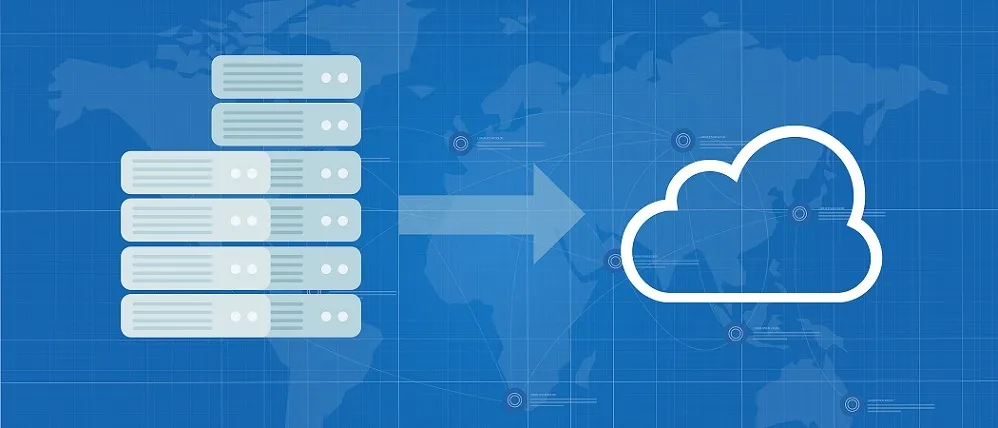Securing Your Cloud Migration: A Guide To Cloud Migration Success
Securing Your Cloud Migration: A Guide To Cloud Migration Success
The journey to a cloud-based infrastructure can seem like an arduous task: fraught with unknowns, potential pitfalls and seemingly endless complexity. Yet in many ways it is akin to the legendary phoenix rising from the ashes - by taking the plunge, organizations are reborn into something greater than they were before. Securing your cloud migration requires careful planning and strategic oversight; this guide will provide readers with actionable steps for ensuring success.
Cloud migrations offer businesses numerous advantages over traditional IT infrastructures, such as scalability, cost efficiency and enhanced data security features. However, these benefits come at a price – there must be due diligence taken when making decisions regarding which applications should move to the cloud, where those applications should reside and how best to protect their data during the transition process.
In order to make informed choices about migrating systems and services from on-premise environments to public or private clouds securely, businesses need up-to-date information concerning industry standards, regulatory compliance requirements and strategies that enable continuity of service throughout the entire process. This guide provides users with essential knowledge needed for successfully executing secure cloud migrations.

Assessing Your Cloud Readiness
The process of cloud migration requires close assessment and planning to ensure optimal security. In this guide, we will explore the critical first step in preparing for a secure cloud transition: assessing your current cloud readiness.
As one embarks on such an undertaking, it is essential to analyze the strengths and weaknesses of existing infrastructure and identify any potential areas that may need attention or updating. From authentication protocols to data encryption standards - every detail must be taken into consideration when evaluating the state of your organization's IT environment prior to making any changes. This includes determining how much bandwidth is available, defining access control policies, and establishing detailed logging requirements.
Once all elements have been reviewed and evaluated, organizations should determine what processes are necessary for ensuring their systems remain compliant with regulatory guidelines and industry best practices. Additionally, having a comprehensive understanding of potential threats can help inform decisions about which solutions are most appropriate for protection against malicious activities like cyberattacks or unauthorized access attempts. By taking these steps early on in the preparation process - organizations can set themselves up for success as they plan their journey towards the cloud.
Defining Your Cloud Migration Strategy
As the journey of cloud migration commences, it is crucial to define a strategy that will guarantee its success. It is like mapping out an expedition with clear objectives and milestones to reach those targets. This second step in securing your cloud migration presents guidelines on how to chart the most efficient course for destinations unknown.
The first action should involve understanding what sort of resources are required for this transition. This means examining any existing IT infrastructure as well as possible investments needed for new technologies or software. In addition, consider if there are specific standards or regulations that must be met when moving data from one platform to another – such as privacy laws or export requirements. Furthermore, look at options for backup plans and extra layers of security during a large-scale move. All these factors should be taken into account when planning ahead.
Afterwards, decisions need to be made about how you want the process structured. Do you wish to migrate everything at once? Or would breaking up the workloads into smaller chunks over time prove more beneficial? Also consider whether automated tools can provide assistance in simplifying certain tasks while ensuring accuracy across all projects involved in the shift. With careful analysis and weighing of pros and cons beforehand, having a thoughtful approach can make all the difference in navigating towards successful outcomes in your cloud migration strategy.
Establishing Security Considerations
The third step in securing a cloud migration is to establish security considerations. This involves identifying and assessing the risks associated with migrating data to the cloud. It also includes defining policies, procedures and controls that will be implemented to mitigate those risks.
Organizations should take into account both external and internal threats when evaluating their current security posture. External threats include cyberattacks, malicious actors, and vulnerabilities in third-party services or applications. Internal threats refer to poor user practices such as insecure password use or inadequate encryption protocols.
In addition to understanding potential threats, organizations must define how they will secure their data once it has been migrated. Security measures may include using two-factor authentication for access control, encrypting data at rest and in transit, and implementing audit logging processes to detect suspicious activity on the system. These steps are essential for mitigating risk and ensuring compliance with applicable industry regulations or laws.
Identifying The Benefits Of Cloud Migration
Cloud migration is a process in which businesses move their digital infrastructure to the cloud. It offers many advantages, including improved scalability and cost savings for organizations. Identifying these benefits of cloud migration is an important step when planning a successful transition from on-premise IT solutions to the cloud.
When considering the potential benefits of cloud computing, it is essential to consider how workloads can be managed more efficiently with fewer resources. By relying on third-party vendors who specialize in delivering secure, reliable services, businesses are able to reduce overhead costs and enable greater scalability over traditional systems. In addition, by leveraging existing investment in hardware and software assets, companies can access powerful analytics solutions that provide insights into customer behavior and trends.
Migrating applications to the cloud provides businesses with increased flexibility across different platforms while ensuring data security and compliance requirements are met. Additionally, by taking advantage of automated processes such as DevOps or Infrastructure as Code (IaC), teams can speed up deployment times and ensure consistent performance throughout the organization's infrastructure environment. As such, understanding these key benefits of cloud migration will help organizations effectively plan for their journey towards a more efficient future.
Evaluating Cloud Vendors
Just as one might compare apples to oranges when shopping for produce, so too must organizations carefully evaluate potential cloud vendors in order to make the best decision. When evaluating cloud vendors, companies should consider a number of factors such as security measures, scalability options and cost-effectiveness prior to committing to a specific provider.
To begin with, the most important thing any business needs is assurance that their data remains secure within the new environment; therefore, it is essential for companies to gain an understanding of what types of security measures are offered by each vendor. Companies need to ensure that there are processes in place regarding authentication protocols and encryption methods used on both ends—including how access rights will be managed once migration is complete. Additionally, businesses should inquire about service availability guarantees and other backup strategies available from providers in case of unexpected outages or attacks.
Finally, scalability requirements and cost comparisons between different vendors also need to be factored into the evaluation process. It is important that companies identify which services they require now versus what they may need down the line as their operations expand—ensuring that whichever vendor they choose can accommodate future growth without incurring additional costs or complexity. Similarly, budgets play a key role in determining which provider makes sense financially given all of the features involved; thus, taking time to research pricing models and potential discounts can help organizations make sound decisions based on these criteria.
When assessing cloud vendors then, organizations must carefully review numerous elements related to security procedures, scalability capabilities and financial considerations before making final choices concerning who will host their digital assets moving forward.
Planning Your Cloud Migration
Planning is paramount when it comes to cloud migration. Preparation and precision are key for securing a successful journey into the cloud. Prior to embarking on this process, businesses must create an actionable plan that captures the scope of their requirements, outlines objectives, and enumerates tasks associated with transitioning data from one environment to another.
The planning stage necessitates an assessment of the existing infrastructure and applications being deployed in order to determine how they will interact within the new environment. Additionally, organizations should review any contractual agreements already in place before deciding which method of deployment best suits their needs: public, private or hybrid clouds. Organizations seeking cost-effective solutions may also opt for Infrastructure as a Service (IaaS).
Once all preliminary research has been completed, companies can begin mapping out their cloud migration strategy by specifying the timeline and budget allocations needed to ensure success. It is important that stakeholders have access to comprehensive documentation throughout each step of the process so they remain informed about updates and changes along the way. By taking these steps prior to beginning implementation, businesses can rest assured knowing they are well-prepared for their move into the cloud landscape.
Implementing Security Best Practices
The cloud migration process involves numerous steps and considerations. A critical step in the process is implementing security best practices. Security best practices are essential to ensure a secure, successful transition of data and applications into the cloud environment.
There are several key strategies that can be employed when implementing security best practices for a cloud migration. These include identity management and verification, segmentation of services and resources, encryption of sensitive or confidential data, regular vulnerability scanning and patching, monitoring of user access control rights, logging activity within the system to detect anomalies, deploying automated tools for threat detection, and setting up multi-factor authentication systems.
These approaches should be incorporated into an organization's overall security plan as part of their risk mitigation strategy. This will help them reduce vulnerabilities related to cloud migrations by providing organizations with ways to protect their data from malicious actors and unauthorized access. Additionally, these measures will increase the visibility of any potential threats before they become costly problems for the organization down the line.
Monitoring Your Cloud Environment
Like a vigilant sentinel, monitoring your cloud environment is an essential part of securing your cloud migration. As the technology landscape continues to evolve and new threats emerge, it's important to stay ahead of potential security issues with regular checks on vulnerabilities and compliance status. To ensure you are getting the most out of your cloud setup, here are some key considerations for monitoring your cloud environment.
First, identify any weak points in the system. This could include outdated software versions or inadequate access controls that allow unauthorized users into sensitive areas. Regularly audit these points so you can address them as soon as possible before they become major problems down the road. Additionally, consider using automated tools such as vulnerability scanners and intrusion detection systems to detect any malicious activity quickly.
Second, make sure all users have proper authentication protocols in place when accessing data stored in the cloud. Establishing multi-factor authentication like passwords, biometrics or SMS verification codes will help protect against account hijacking and ensure only authorized personnel can gain entry into sensitive areas. Also be sure to monitor user activity and suspicious logins from unusual locations or IP addresses to further reduce risk exposure.
Finally, review existing policies for ensuring compliance with applicable regulations and industry standards. Organizations must take steps to meet specific requirements outlined by regulatory bodies such as HIPAA or GDPR depending on their field or region; noncompliance may lead to hefty fines or other sanctions should an incident occur due to insufficient security measures being taken. It’s also important to regularly check whether service providers are meeting their contractual obligations regarding data management and storage practices.
Making Improvements To Your Cloud Infrastructure
According to a recent survey by Cloud Security Alliance, nearly two-thirds of organizations reported major security challenges when migrating applications and workloads to the cloud. This statistic highlights the importance of properly managing and improving your cloud infrastructure in order to ensure successful migration. In this article, we will discuss how you can make improvements to your cloud infrastructure for better security and performance.
There are several ways you can improve your existing cloud environment. Firstly, it is important to review current configurations regularly with an eye towards optimization as well as security. This involves looking at things such as networking rules, access control policies and system health checks to identify any potential vulnerabilities or areas where performance could be improved. Additionally, it is recommended that you evaluate whether certain services need additional protection from external threats - for example, implementing firewalls or intrusion prevention systems (IPS). Finally, keeping up with the latest software updates is also essential; this helps reduce the risk of malicious attacks on your data and systems.
Organizations should also invest resources into training staff so that they understand best practices for configuring and maintaining their cloud environments. Regularly assessing user access rights provides another layer of security which ensures only authorized personnel have access to sensitive data or systems. It is also important to monitor usage patterns in order to detect any suspicious activities such as unauthorized logins or unusual network traffic. Following these steps will help keep your cloud infrastructure secure while optimizing its performance and ensuring a successful migration process overall.
Leveraging Automation For Security
Automation is an important security tool in cloud migration. It represents a proactive approach to securing data, as automation systems can identify potential threats before they become issues and allow organizations to respond quickly and effectively. Automation also reduces the time spent on manual processes such as scanning networks for vulnerabilities or identifying malicious activity. This can greatly enhance the speed of response during security incidents, allowing IT teams to take immediate action against any threats they find.
Organizations must consider what types of automated solutions are most appropriate for their particular environment and how best to implement them into existing infrastructure. For example, automated vulnerability scanners can be used to detect weaknesses in software applications before attackers exploit them. In addition, network intrusion detection systems (NIDS) can help monitor traffic for suspicious activities that may indicate an attack is underway. Organizations should also use tools like log correlation engines to analyze logs from multiple sources and alert staff when unusual events occur so they can investigate further.
Once implemented, it is essential that organizations regularly audit their automated security systems to ensure they are functioning correctly and provide adequate protection against cyberattacks. Additionally, users should receive training on the proper use of these systems so they understand how best to utilize them for maximum benefit. By leveraging automation for security purposes throughout the cloud migration process, organizations will increase the efficacy of their defenses while reducing manual effort required by IT staff members.
Preparing For A Cloud Migration
As cloud migrations continue to grow in popularity, it is important to understand the necessary measures that must be taken in order to make this process as secure and beneficial as possible. By assessing readiness, defining strategies, evaluating vendors, implementing best practices, monitoring environments, making improvements, and leveraging automation for security, businesses can ensure they are taking all of the necessary steps to protect their data while also getting the most out of their cloud solutions.
The adage “failing to plan is planning to fail” not only applies here but should serve as a reminder of how important proper preparation is when dealing with something as critical as cloud migration. To avoid any complications or issues down the line, companies need to take into account every step along the way so they can maximize both efficiency and safety throughout the entire process.
Ultimately, by following these guidelines and understanding each step involved in successfully migrating to the cloud, businesses will have much greater control over their environment while also minimizing potential risk factors. It may seem like a daunting task upfront; however, those who properly prepare themselves from start-to-finish stand the greatest chance at ensuring success during the transition process.
Let Us Help You!
Sign up to our newsletter











